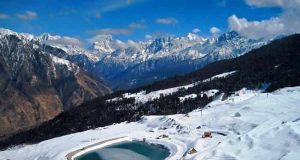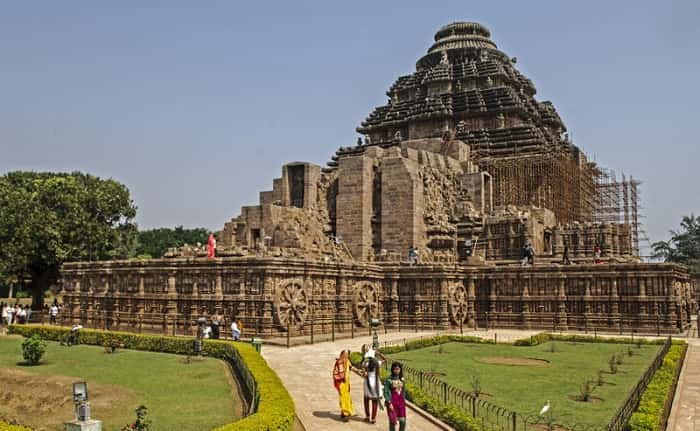Agra Fort: The Elegant Fort of Uttar Pradesh
Humans have been living on earth since a very long time. In the early days, humans used to live in herds just like we do today in communities, but the difference was that the early human beings were constantly changing their location. The concept of settling down at a place and constructing a shelter for one’s family emerged much later, which became one of the primary goals, as the human race became more civilized with the passing time. A time came when huge, permanent structures were being constructed by the kings who were ruling a specific region or many regions of a country. These residential spaces were also sometimes used as administrative headquarters, thus becoming an important junction of history.

More time passed and more we got civilized, thus eliminating the ancient societal norms and adapting a different culture and lifestyle that emerged through the industrial and cultural development. However, the residential spaces built by the royal families remained at their place, became a historical landmark and subsequently a tourist place where thousands of visitors arrive each year. The Agra Fort of Uttar Pradesh showcases the glory of the royal times and families and allows the visitors to experience how it was to be inside a grand fort.
Location
The Agra Fort is located in the city of Agra, an important tourist centre. The fort is very close to the world famous palace, Taj Mahal.
History
The Red Fort was constructed at the site of Badalgarh. Prior to this fort, an old brick fort used to occupy this expanse. The old fort was first occupied by Sikandar Lodhi, who was previously in Delhi. He ruled from this fort for nine years before he died in 1517. After his death, his son Ibrahim Lodi occupied the fort for another nine years before he lost his life in the Battle of Panipat. During his reign, he added several structures to the fort.
After Ibrahim’s defeat and death, the Mughal rulers occupied the fort. Babar resided in the palace constructed by Ibrahim. The fort went into the hands of Sher Shah Suri, who defeated Humayun in 1540. Suri occupied the fort till 1555 after which Humayun recaptured it.
Humayun lost the fort to Hem Chandra Vikramaditya, who was defeated by Akbar in the Second Battle of Panipat. Akbar decided to shift his capital here and restructure the old fort that was now in ruins. More than 10,00,000 workers are believed to be employed for the construction of this grand fort, which was completed in eight years.
Structure
The fort was built using red sandstone. It is spread over an area of 3,80,000 square metres with walls reaching up to a height of seventy feet. There are four gates that were used to enter or exit the fort.
Today, only two of the four gates are operational, out of which only one gate is accessible by the public. The important structures built inside the fort include:
Jahangiri Mahal
Built exclusively for the royal women, this palace was used by Akbar’s wives.
Mina Masjid
This mosque was built by Shah Jahan for personal use. Built out of white marble, this mosque is plane with no decorations or ornamentation.
Moti Masjid
This mosque was built for the courtiers of Shah Jahan. The mosque got its name as it shined like a pearl in daylight.
Musamman Burz
A beautiful tower, the Musamman Burz was built for Mumtaz Mahal, Shah Jahan’s wife.
Takht-e-Jahangir
Takht-e-Jahangir is a throne constructed by Jahangir and placed in the private audience hall of the fort. Before being brought here, this throne, built out of black onyx, was kept in a fort in Allahabad.
Nagina Masjid
Another mosque built out of white marble, the Nagina Masjid, is simple yet fascinating with its intricately designed prayer chamber. It was constructed for the exclusive use of royal women.
Other noteworthy structures of the fort include Anguri Bagh, Rang Mahal, Sheesh Mahal, etc.
What to Do
Declared as a UNESCO World Heritage Site, the Agra Fort and all the structures built inside are a must watch for the visitors. Be it the mosques or the audience halls, or the palaces and towers, every section of this expansive fort is mesmerizing.
The view of the adjoining Yamuna river, Taj Mahal and the surrounding area from the top of Musamman Burz is equally breathtaking.
Tourists are free to use their cameras inside the fort complex.
Eat, Drink, Collect
Agra is famous for petha, a traditional sweet, which is sold by several sweetmeat shops around the city.
The famous restaurants of Agra include The Silk Route Restaurant, Pankhuri Restaurant, Brijwasi Sweet House and Restaurant, Maya Ji Restaurant, Kamat Hotel, etc.
Drinks, both alcoholic and non-alcoholic, are freely served in most of the bars and hotels.
Agra is also famous for stone products and artificial jewelery. One must remember to bargain as much as possible and check the product before buying it.
The U. P. Handicraft and Handloom Centre also sells gift items made out of marble and wood, artificial jewelry, embroidery, handicrafts, etc.
Best Time to Visit
The Agra Fort remains open from sunrise to sunset on all days.
Visitors from India, SAARC, and BIMSTEC countries are required to pay Rs 10/- per person towards the entry to the fort. Visitors from other countries are required to pay Rs 250/- per person for entry.
How to Reach
Agra is well connected by adjoining cities and states through rail and road network. Several trains run from different metro cities and important junctions towards Agra. Thus, it is easier for tourists to reach to the city through rail route.
Agra is situated on the Golden Triangle tourist circuit, which makes it easily accessible through the cities connected through this route. Seasonal flights connect Agra airport with a few cities.


